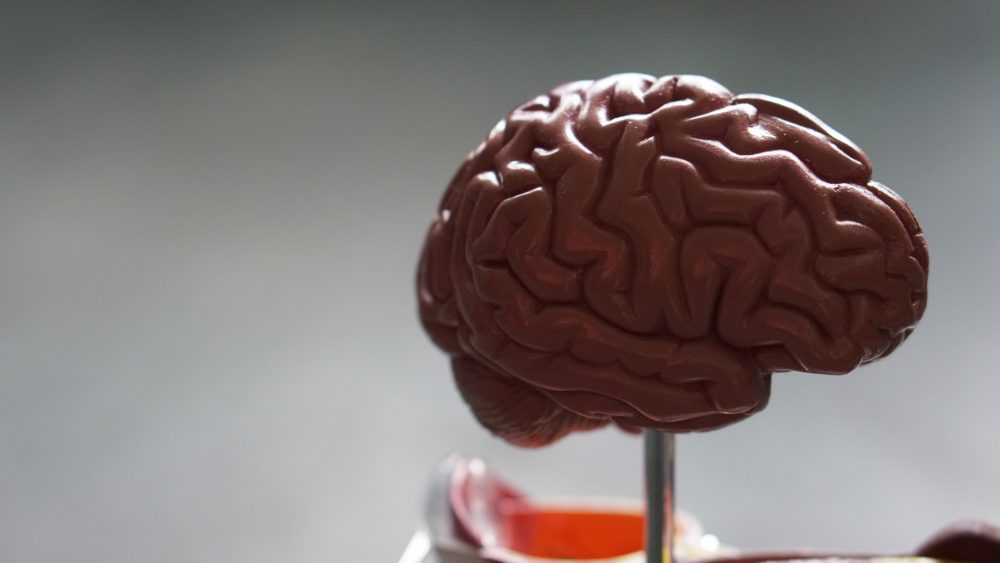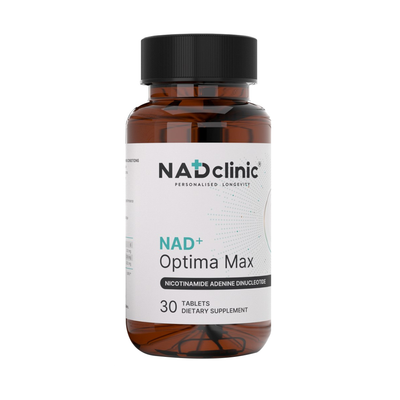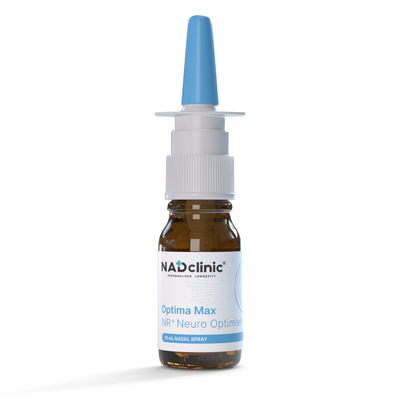يعد شهر سبتمبر هو شهر الزهايمر العالمي حيث يجتمع الناس من جميع أنحاء العالم لرفع مستوى الوعي وتحدي الوصمة التي لا تزال قائمة حول الخرف. تسلط حملة هذا العام الضوء على العلامات التحذيرية لمرض الخرف، وتشجع الناس على البحث عن المعلومات والنصائح والدعم، بالإضافة إلى الاتصال بجمعية الزهايمر أو الخرف في بلادهم. لقد فكرنا في اغتنام هذه الفرصة لإلقاء نظرة على كيفية قدرة NAD+ على مساعدة أولئك الذين يعانون من أمراض الدماغ.
نظرة عامة على مرض الزهايمر
يُعدّ مرض الزهايمر السبب الأكثر شيوعًا للخرف، ويمثل ما بين 60% و80% من جميع حالات الخرف. ليس الزهايمر مجرد عرض من أعراض التقدم في السن، ومن المهم التأكيد على أنه ليس جزءًا من عملية الشيخوخة الطبيعية. وللأسف، يتفاقم المرض مع مرور الوقت، ولأنه لا يوجد علاج شافٍ له حاليًا، فإن معظم العلاجات تُركّز على إبطاء التدهور المعرفي الذي يُواجهه المصابون به بدلًا من تحسين حالتهم.أعراض مرض الزهايمر
يعاني مرضى الزهايمر من مجموعة من الأعراض بما في ذلك:- فقدان الذاكرة
- فقدان المفردات
- التحديات البصرية/المكانية
- صعوبة إكمال المهام
- تقلبات المزاج
أسباب مرض الزهايمر
من المرجح أن يتم تشخيصك بمرض الزهايمر بعد سن 65 عامًا حيث يتضاعف عدد الأفراد المصابين بالمرض كل خمس سنوات. بحلول سن 85 عامًا، يعاني ثلث الأشخاص من مرض الزهايمر. لا يوجد سبب محدد لمرض الزهايمر، بل يعتقد الباحثون أنه ناجم عن عدد من العوامل المختلفة بما في ذلك الشيخوخة، والجينات، والعوامل البيئية، ونمط الحياة.مرض الزهايمر وNAD+ وخلل الميتوكوندريا
تُركز إحدى النظريات حول سبب المرض على تراكم الخلايا العصبية والبروتين. تعيش الخلايا العصبية طويلًا وتُصلح نفسها بانتظام، ولكن لدى مرضى الزهايمر، تتكتل لويحات بيتا أميلويد (المُصممة للمساعدة في إصلاح الخلايا العصبية) مُسببةً موت الخلية العصبية. ومع مرور الوقت، قد يتراكم المزيد من هذه اللويحات مُسببةً ضمور الدماغ. بالإضافة إلى تراكم البروتين الضار، يرتبط مرض الزهايمر بخلل في الميتوكوندريا في خلايا الدماغ. فبدون الميتوكوندريا الوظيفية، تموت الخلية. ويلاحظ مرضى الزهايمر زيادة في موت الخلايا. ويعود ذلك إلى ضعف نشاط إصلاح الحمض النووي الطبيعي في الدماغ في مرض الزهايمر، مما يؤدي إلى الالتهاب والخلل الوظيفي. وأظهرت الدراسات أن المكملات الغذائية التي تحتوي على NAD+ أدت إلى زيادة NAD+ في الدماغ، مما أدى إلى تقليل إنتاج بيتا أميلويد، وإبطاء تدهور الوظائف الإدراكية لدى المرضى. في الواقع، تبدأ العديد من الحالات المزمنة في خلايا لا تُستقلب بكفاءة - بمعنى آخر، لهذه الأمراض أساسٌ ميتوكوندريا، وقد ازدادت حالات الإصابة بهذا السبب منذ سبعينيات القرن الماضي. ومع ذلك، فقد عولج العديد منها بنجاح باستخدام مكملات NAD+.أبحاث NAD+
بحث بقيادة الدكتور فيلهلم أ. بور في المعهد الوطني للشيخوخة (NIA) التابع للمعاهد الوطنية للصحة، بدأ الباحثون في اختبار ما إذا كانت مكملات NAD+ قادرة على تطبيع مستويات NAD+ في أدمغة الفئران ومكافحة العجز في التفكير والذاكرة. قام فريق البحث في البداية بتطوير سلالة جديدة من الفئران التي تحمل السمات الرئيسية لمرض الزهايمر البشري، مثل التراكم غير الطبيعي لبروتينات تاو وبيتا أميلويد. مكملات NAD+ أُضيفت هذه المركبات إلى مياه شرب الفئران، ووجد الباحثون أنه بعد ثلاثة أشهر، انخفضت نسبة تلف الحمض النووي لدى الفئران، وانخفضت مستويات تلف الخلايا العصبية وموتها، وزاد إنتاج الخلايا العصبية الجديدة، وانخفض التهاب الدماغ لديها مقارنةً بفئران المجموعة الضابطة. كما تفوقت الفئران الضابطة في العديد من اختبارات التعلم والذاكرة، مثل متاهة الماء، وأظهرت قوة عضلية وقدرة تحمل أفضل. اختبر فريق البحث أيضًا خلايا بشرية من أشخاص مصابين بمرض الزهايمر وغير مصابين به. وكما في دراسات الفئران، قلّلت مادة NR من تلف الحمض النووي في خلايا مرضى الزهايمر. سيكون من المثير للاهتمام حقًا أن نرى كيف يتقدم هذا البحث في المستقبل وكيف قد يحسن نتائج مرضى الزهايمر.
يشارك
المنتجات المميزة
اكتشف العناصر الأكثر شعبية لدينا

NADSQx قلم ذكي 1000 ملغ
£399.00

مجموعة اختبار مستويات NAD+
£199.00
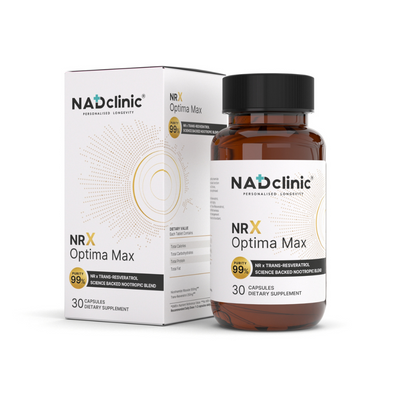
NRx أوبتيما ماكس
£66.99
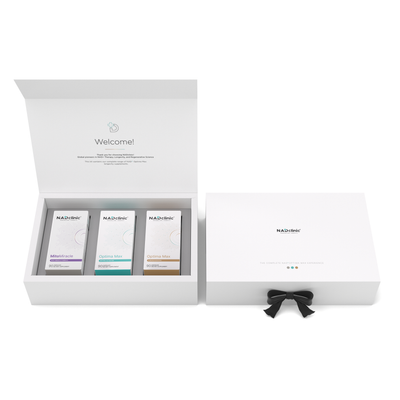
مجموعة هدايا أوبتيما ماكس
£264.99
اقرأ المزيد

الأسبوع الدولي من السعادة في العمل: 3 طرق يمكن أن تساعدك NAD+ المكملات الغذائية في تحسين سعادتك في العمل
يجب أن تسعى كل شركة جاهدةً لخلق بيئة عمل سعيدة. فالسعادة في العمل لا تعود بالنفع على الموظفين فحسب، بل على الشركات أيضًا. فالموظفون السعداء يُحسّنون أداءهم؛ فهم أكثر إنتاجيةً ومرونةً وصمودًا وإبداع...

يوم قلب العالم: كيف يمكن أن تساعد مكملات NAD+ في ارتفاع ضغط الدم وأمراض القلب
يوم القلب العالمي 2021 لا تزال أمراض القلب والأوعية الدموية السببَ الأول للوفاة في العالم، إذ تُودي بحياة 18.6 مليون شخص سنويًا. لا يوجد سببٌ قاطعٌ واحدٌ لها، وغالبًا ما تُعزى إلى مزيجٍ من نمط الح...


